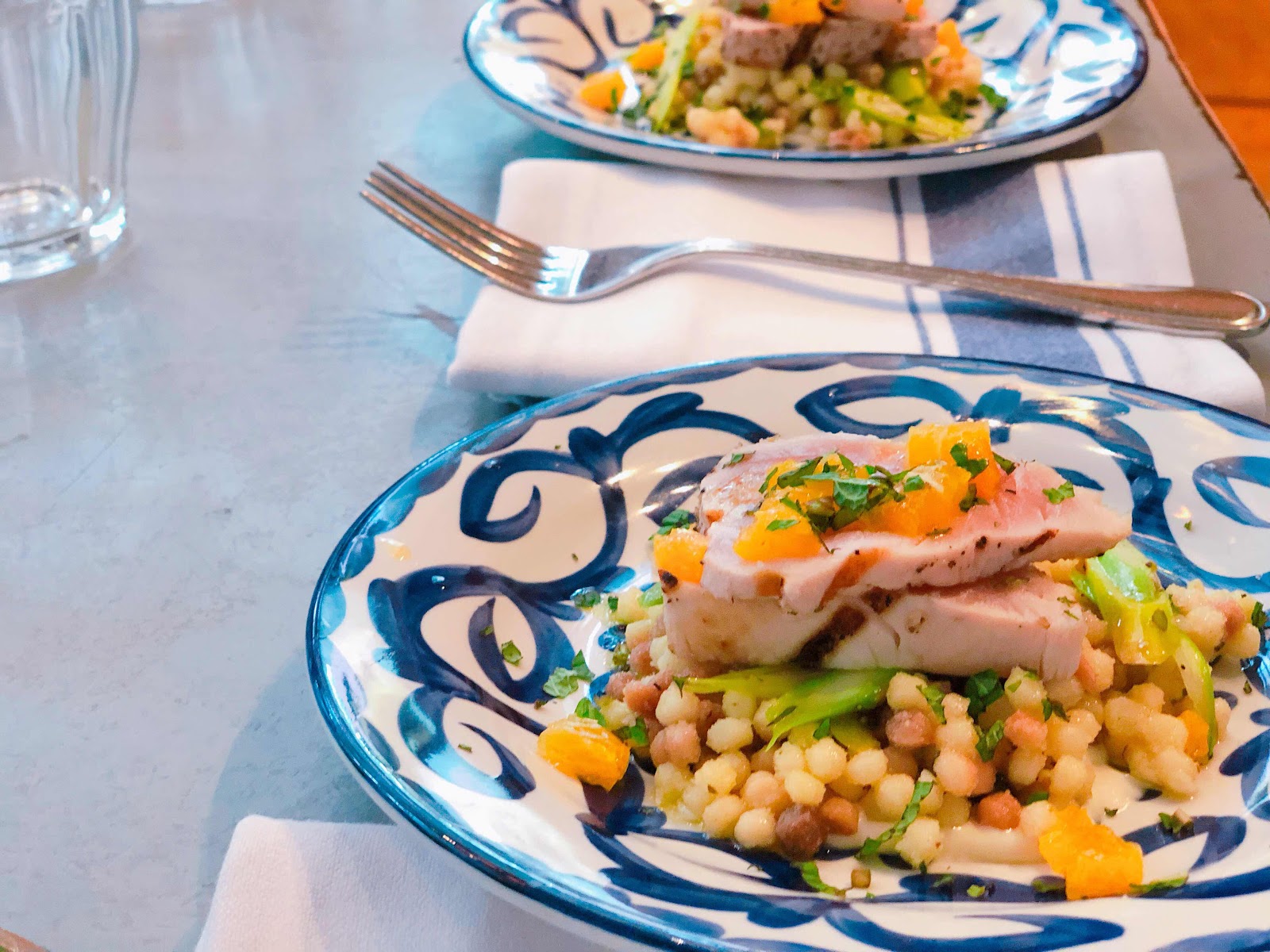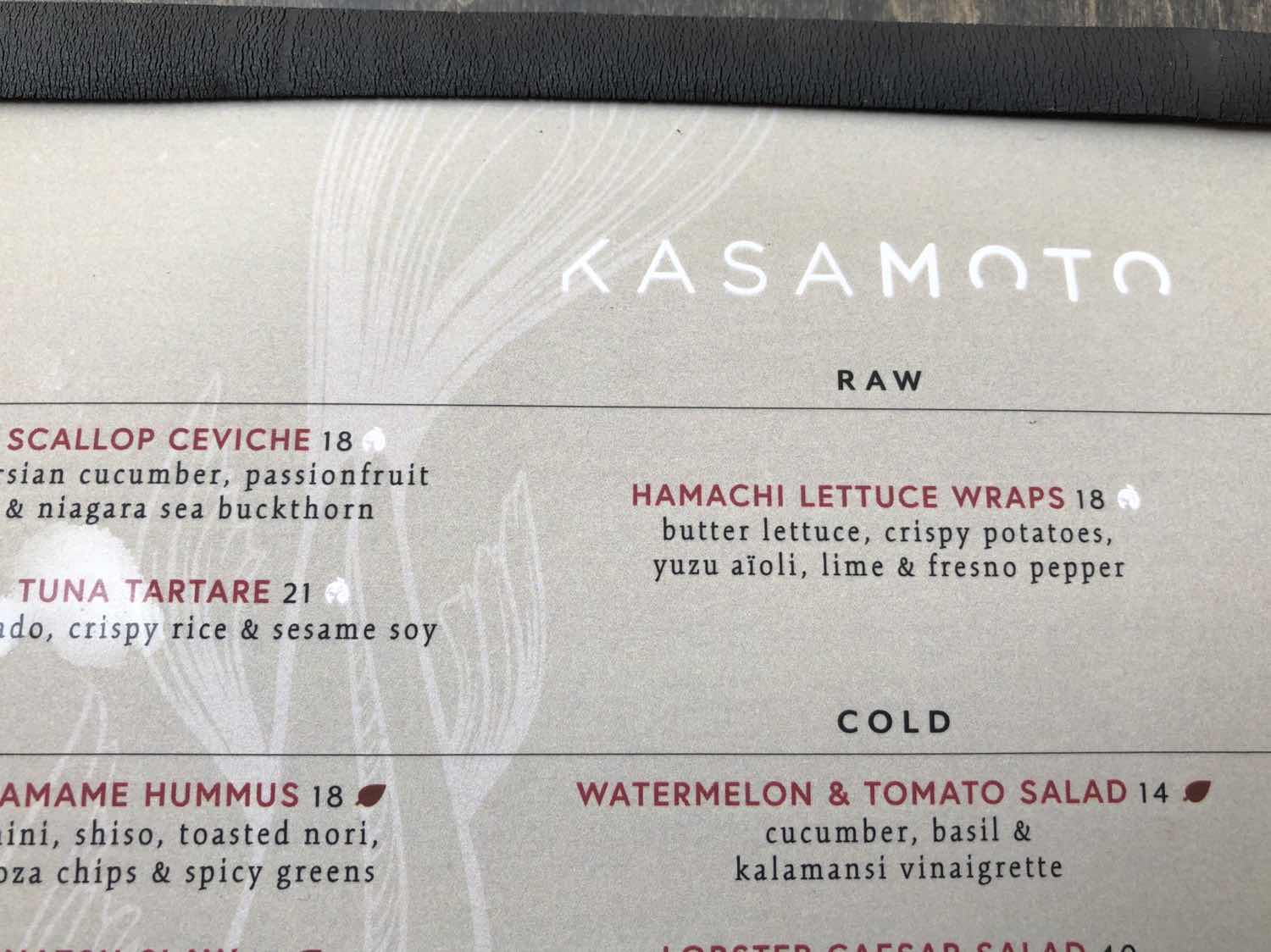
The Ocean Wise seafood program started in Vancouver when a
restaurateur approached a member of the education team at the Vancouver
Aquarium to ask how they could ensure they were serving sustainable seafood.
Good question, they thought. It’s definitely not something where information is
readily available for companies, let alone consumers. With that, they developed
the Ocean Wise seafood program to assess sustainable options, connect suppliers
and restaurants, and allow restaurants to promote these options to diners.
As a foodie, I knew about their sustainability program. For
years, I’ve seen their logo grace menus and tried to order those options to
ensure my meal has less impact on the Earth. So, when they reached out to ask
if I wanted to attend their first complimentary walking tour for the public, I
didn’t realize I’d learn anything new about the organization.
The first being that they are so much more than the little
logo that’s found on menus. Rather, they are based out of the Vancouver
Aquarium and are Canada’s national sustainable seafood program, with the vision
to ensure the world’s oceans are healthy and flourishing.
The Ocean Wise Seafood program is
part of the Ocean Wise Conservation Association (OWCA) which focuses on:
researching about the oceans to arm everyone with knowledge, educating others
about what it takes to be sustainable, running the Great Canadian Shoreline
which supports volunteer led clean-up projects and limiting the use of
plastics, and actually saving marine life through the Marine Mammal Rescue
Centre. For consumers, the Seafood Program helps diners make better choices
when it comes to eating habits.
Secondly, I learnt
they’re not a certification, but are rather a recommendation body that assesses
fisheries and then acts as a middle person between fisheries and restaurants.
For example, if you’re a chef who really wants to serve a seared tuna
appetizer. They determine if there’s a sustainable tuna option and then
recommends options as to where the company can purchase from.
Over 700 partners in
Canada participate in the program, covering thousands of locations, and it
continues to grow as establishments really want to do the right thing.
Overfishing is a big issue and as the world’s population grows and more people
eat seafood there’s a risk that these populations will become extinct. Already,
about 90% of the world’s fish options are considered fully fished or overfished.
As consumers, we need to start eating from underutilized species to ensure
other generations can actually enjoy seafood in the future.
I’m a big fan of
sushi and have heard about the rarity of tuna. Therefore, when Palm Lane, the
first stop of the walking tour, served tuna, I was a bit intrigued. In reality,
it’s the blue fin tuna that’s reaching dangerously low populations, while the Albacore
tuna, especially when line caught (essentially fished one-by-one rather than
using a net method that can scoop up a lot of other marine life), is a
sustainable option.
Palm Lane already prides itself by having a large portion of
their menu plant-based - the only protein they do serve is Albacore tuna. It’s
used in the Osaka salad ($14.25; sample size shown below), which is essentially
a deconstructed sushi roll. A bed of nappa cabbage and romaine is topped with a
host of vegetables you’d normally find in Japanese cuisine (edamame, nori,
pickled vegetables, avocado) and heartier ingredients (sushi rice, sweet potato
tempura, and delicious fluffy fried tofu). Crowning everything are slices of delicately
seared tuna that’s simply seasoned and goes so well with yuzu wasabi
dressing. It’s seriously delicious.
Ocean Wise recommends sustainable species based on four
criteria:
- Is it a healthy and resilient species?
- Is there an effective and adaptive management plan?
- Lastly, is it harvested in a manner that limits
damage to the surrounding environment?
Assessments are written to the Seafood Watch standard. The
assessment will ultimately classify the species into two categories: Ocean Wise
or Not Recommended. Species are regularly reclassified as new information is
known and fisheries are re-assessed at least every 5 years to ensure their
harvesting methods are still in line with the recommended practices.
Kasa Moto, being a Japanese restaurant, serves a lot of
seafood. Therefore, they were a great stop to showcase how many dishes could be
considered Ocean Wise! We started with the scallop ceviche ($18; sample portion
shown below) that takes a meaty Hokkaido scallop and soaks it in a sweet,
tangy, and slightly spicy passion fruit and sea buckthorn marinade. Cucumber
and grapefruit slices add a bit of textual and flavour contrast against the
delicate scallop without taking away its natural flavours.
From New Zealand, we’re served a vibrantly red Ora King
salmon. These are farmed in an enclosed bay to ensure that they don’t affect
other wild life and in an area where the salmon has adequate space to swim
around. Ocean Wise explains that they don’t necessarily think that only wild
options are the best. In order to be sustainable, we’ll need to raise some of
the seafood we eat… unfortunately, Mother Nature won’t naturally create enough
marine life to support the world.
Where farming becomes dangerous is when they overcrowd the
fish and add antibiotics and other chemicals into the water to ensure the fish resist
diseases in the close quarters. Therefore, Ocean Wise only recommends farms
that meet their criteria for sustainable aquaculture practices.
The pressed Ora King salmon sushi ($19) is prepared aburi style so the already fatty fish is
topped with garlic aioli and blow torched quickly, melding all the fasts
together so it starts seeping into the rice. Indeed, it makes for a rich and
decadent bite as all the flavours melt onto your tongue leaving a sweet
smokiness.
I’m also delighted to hear one of my favourite dishes, miso
black cod ($45; sample portion shown below) is also part of the Ocean Wise Life
program. This fish arrives closer to home, coming from the west coast of
British Columbia. The sablefish (another name for black cod) is oven baked
until flakey and paired with grated ginger and carrot, a spear of pickled
asparagus, and vinaigrette to give it a refreshing finish.
Having eaten at Kasa Moto when it first opened, I love their
revamped menu. It leans more towards traditional dishes where the seafood is
left relatively neutral so its natural flavours are more pronounced.
 |
| Example of the Ocean Wise symbol on Kasa Moto's menu |
So, what information do we need to make sure something is
sustainable? If the Ocean Wise symbol isn’t available (say you’re at a grocery
store), you need three pieces of information: (1) what species the marine life
is, (2) where it’s from, and (3) how it’s harvested. Then, you can go to their
website and enter the information where you’ll get the same yes or no
recommendation.
For our last stop, Mercatto created an Albacore tuna dish
especially for the tour. The fish is one that’s used at their various Toronto
restaurants, customized to local tastes. For our visit, they paired the seared
tuna with a creamy fregola augmented with Ontario asparagus shavings. It’s not
part of current menu, but I highly suggest serving it as a special.
It’s at Mercatto where Chef Doug Neigel really gets to the
crux of why they are part of Ocean Wise. Yes, of course, they want to do what’s
right and be sustainable… but, it’s also something that clients want. Like any
business, restaurants are catering to their customers’ tastes. So, if you
really want to see Ocean Wise recommendations on a menu, as a customer you
should suggest it. In fact, this desire is what caused Mercatto to source a
sustainable calamari option for all their locations.
I’m glad more restaurants and consumers are starting to
think about sustainability. Hopefully, it’s not too late to turn it around for the
impacts that we have already made. With that said, it’s just the start and
there’s still so much to be done. I hope customers will quickly demand that the
industry begins thinking about animal welfare as well. Sure, something is
sustainable, but are we also harvesting marine life in a way that’s humane?
It’s a good start that we’re not overfishing Albacore tuna,
but if they are taken out of the ocean and put into small packed cold holding
tanks or worse yet, removed from water so they end up suffocating for hours
until they actually die, is there a better way of getting that fish to plate?
I’m hopeful that we’ll soon get there.
To end this on a positive note, a special thanks to
zoologist Kristen Rodrigo (who was also part of the tour), for sharing a quote
that should be an inspiration for everyone. It comes from Anne Marie Bonneau, a
zero waste chef, “We don’t need a handful of people doing zero waste perfectly.
We need millions of people doing it imperfectly.”
By no means are we perfect, but let’s do what we can. For a
start, let’s go out and look for the Ocean Wise symbol below when we’re
ordering from restaurants or buying seafood at stores. Then, let’s graduate for
politely asking for it at places where we’re regular customers. If millions of
people enact small changes, it may be all we need to make changes big enough to
save the Oceans.
Disclaimer: The above food samples were from a complimentary walking tour run by Ocean Wise Life. Rest assured, as noted in my mission statement, I will always provide an honest opinion.
Follow me on twitter to chat, be notified about new posts and more - https://twitter.com/GastroWorldBlog
Is That It? I Want More!
Other Gastro World posts similar to this:





